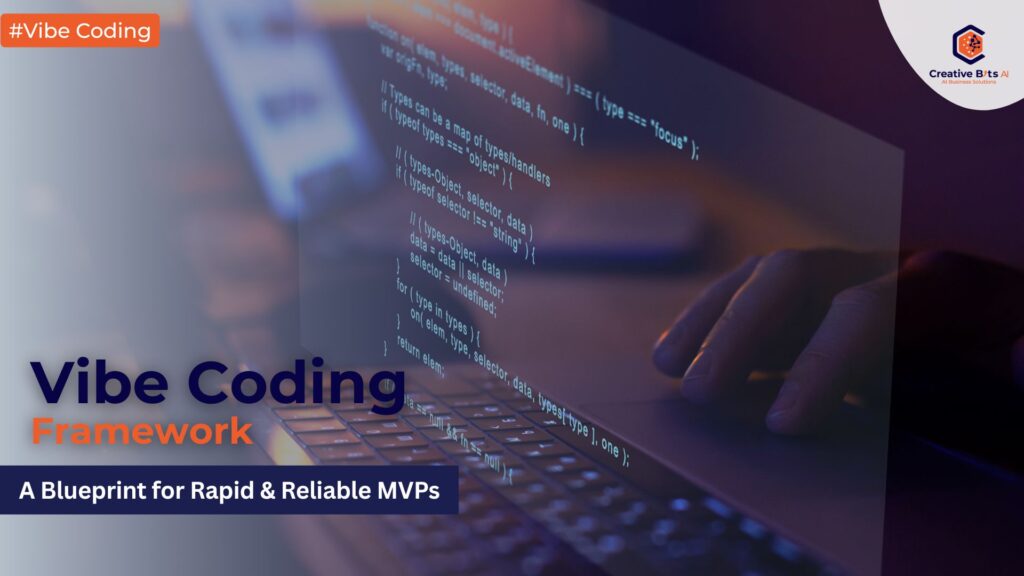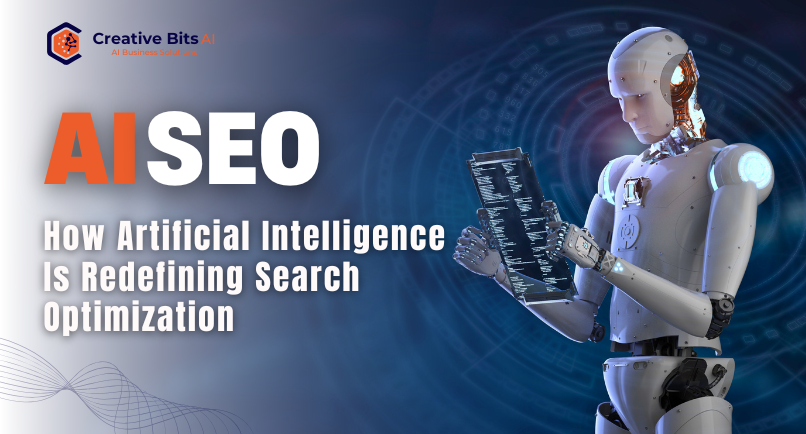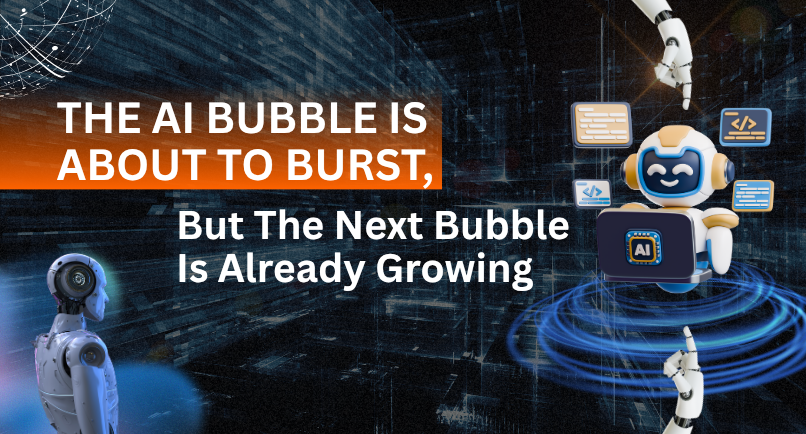In a tech world obsessed with speed, many teams rush to build software with minimal planning, only to realize too late that they’ve cut corners that matter. Others get stuck in endless cycles of documentation, wireframes, and planning tools—never quite getting to version one.
At Creative Bits AI, we’ve faced both extremes. Our response? A fresh, balanced approach to Vibe Coding.
Vibe Coding isn’t a buzzword. It’s a practical framework that merges rapid development, thoughtful design, and AI assistance to bring ideas to life faster and smarter.
What is Vibe Coding?
Vibe Coding is a structured yet flexible way of building MVPs (Minimum Viable Products) and PoCs (Proofs of Concept). It blends lean thinking, real-time collaboration, and LLMs (Large Language Models like GPT-4) into one cohesive methodology.
But at its core, Vibe Coding is about flow, about getting your ideas out of your head and into users’ hands without the chaos.
It answers one fundamental question:
“How can we build fast without breaking everything later?”
The Problem with Traditional MVP Approaches
Most development teams fall into one of two traps:
- Overbuilding: They spend months polishing a prototype with features nobody asked for, guided by bloated specs and waterfall-style planning.
- Underplanning: They dive straight into code, relying on intuition and caffeine, hoping the architecture “sorts itself out.”
Neither approach works well. Overbuilders waste time. Underplanners build messes.
Vibe Coding sits comfortably in the middle. It embraces clarity over perfection, iteration over rework, and structure without rigidity.
The Vibe Coding Philosophy
Before diving into the framework, it helps to understand the mindset that drives it:
- Clarity trumps detail. You don’t need 20 pages of specs, just a clear problem and a vision for the solution.
- Design before code. Code should serve the design, not the other way around.
- AI is your assistant, not your architect. Use LLMs to accelerate, not to automate everything blindly.
- Every step should reduce future friction. If it creates confusion down the line, it wasn’t worth the shortcut.
This approach has helped us prototype entire SaaS platforms, dashboards, internal tools, and experimental UIs in days, not weeks.
Breaking Down the Framework

1. Start with Clear Requirements, Not Clutter
Vibe Coding begins with intentional brevity. The goal is to clarify what you’re building without wasting time on exhaustive documents.
At this stage, all you need is:
- A clearly defined problem
- A short list of core features
- A quick snapshot of the end user
LLMs come in handy here, helping to structure ideas, reword messy requirements, or even suggest what might be missing.
2. Set a Visual Direction with Styling and UI Guidelines
This doesn’t mean commissioning a 40-page design system. It means:
- Picking a font style and size
- Choosing a UI kit or component library (e.g., Tailwind, MUI)
- Defining your color palette
- Establishing a layout grid and navigation logic
The goal is to avoid visual noise or inconsistency later on. A predefined design “vibe” ensures your prototype doesn’t look like Frankenstein’s dashboard.
3. Design Wireframes (With or Without Fancy Tools)
You’re not coding yet.
Sketch out how key screens should look, using Figma, whiteboards, or AI-generated mockups. LLMs can:
- Generate layout ideas
- Suggest user flows
- Convert sketches into structured UI plans
This early clarity prevents scope creep and aligns stakeholders.
4. Build a Functional Prototype (Even If It’s Ugly)
Now, write real code, but keep a prototype mindset. Tools like CodeSandbox help you:
- Simulate core interactions
- Show basic user flows
- Get early feedback
LLMs assist by generating components, mock data, and interactivity stubs.
5. Design a Lean but Logical Architecture
Plan just enough to scale:
- File and folder structure
- Component hierarchy
- State management
- Backend endpoints
- Caching and routing
Use LLMs for boilerplate, validation, or suggestions.
6. Set Up Your Project Environment
Prepare your tooling:
- Git strategy
- Formatters and linters
- Dev environment and test configs
- Basic CI/CD if needed
This clears future obstacles before they appear.
7. Begin Implementation: The Actual “Vibe Coding” Phase
Stay in flow:
- Use AI to generate components and helpers
- Test in small pieces
- Keep code modular and clean
You’re building light but legitimate software, not throwaway prototypes.
8. Test Smartly (Not Exhaustively)
Basic manual and AI-assisted testing helps to:
- Validate flows and components
- Identify edge cases
- Auto-generate test scripts or unit tests
Just enough testing to trust your MVP.
9. Deploy & Share
Use platforms like:
- Netlify, Vercel for frontend
- Render, Railway for full-stack
- Heroku or AWS for advanced needs
Get the MVP in front of users. Let feedback drive the next steps.
Why This Framework Works
Vibe Coding works because it honors how modern teams actually operate:
- Small teams
- Tight deadlines
- AI-augmented workflows
- High user expectations
It offers a repeatable system to ship faster without sacrificing structure or quality.
Who Should Use It?
Perfect for:
- Startups validating ideas
- Product teams building internal tools
- Agencies delivering client PoCs
- Solo devs building SaaS
If you need results fast, Vibe Coding is for you.
Final Thoughts
At Creative Bits AI, we use Vibe Coding not just to build things, but to think better while building. It keeps our team aligned, productive, and in sync with our clients and users.
If you’ve been burned by chaotic builds or over-planning, Vibe Coding might just be the framework you’ve been missing.
Work smarter. Ship faster. Keep vibing.




